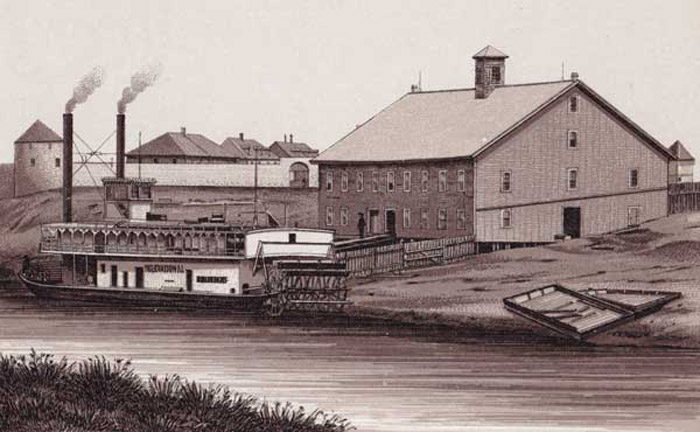Rebecca Kornelson, the grand daughter of Mennonite Heritage Village (MHV) founder John C. Reimer muses about the 150th anniversary of the Mennonites arrival in Manitoba.
Our Steinbach area was first inhabited by the Anishinaabe people for thousands of years. Then Métis occupied a lot of the land. They did a little farming and hunted the bison. In 1871 the Indigenous were moved onto reserves. The Mennonites came to the Dominion of Canada in 1874. We celebrate 150 years this year. These Mennonites came from the Borosenko Colony of Russia, later called Ukraine. The Mennonites were sold land that was swampy and almost uninhabitable.
I am wondering if something was written in the Winnipeg Free Press about the riverboat full of men, women, and children who landed near the forks of the Red and Assiniboine Rivers. The Winnipeg Free Press had only begun publishing news two years earlier.
Did the reporters describe what the people looked like, what curious language they spoke, that they were looking for oxcarts to transport them to a place southeast of Winnipeg where they would settle? Did they wonder what the people believed, why they left Russia, what their hopes and dreams were for this new home? Perhaps one of the Mennonite leaders would tell the Press in broken English that “We cannot direct the winds, but we can adjust our sails”. To the Mennonite group it meant that the politics of Russia were the winds of death, thus the Mennonites were adjusting their sails by moving to a new country with more freedoms to live the way they felt they should.
As I sit in my old black rocking chair that once belonged to my great, great grandmother, I wonder what she would have told her four-year-old daughter on the Atlantic voyage. Little Anna had enjoyed tasting molasses she scratched off the sides of a huge barrel. Did the child suffer hunger during the first years in the new country when crops were scant?
The village of Steinbach was arranged into long strips with house barns near the street. Each morning the cow herdsman would come along the street to collect the cows and take them to a communal pasture, and at night he would drop the cows off at their respective homes. Yearly, more fields were plowed, and crops planted and harvested. More food became available. A small store was built on the street to provide some more items.
The first church the Mennonites built in Steinbach was on the eastern end of the only road going through the village, presently Main Street. This church, called the Kleine Gemeinde, was a place where they could worship in peace. Eventually, they built a new church building across the street. The Steinbach Evangelical Mennonite Church still exists beside that site. The villagers also built a school on the corner of present-day Main St. and Reimer Ave., where they could teach subjects they felt were important and in the German language. Steinbach was named after a place in their homeland. Other small villages, such as Kleefeld, Blumenort, Blumenhof, and Randolph (Chortitz) were also built in the southeastern part of Manitoba. The people worked hard which brought them success. Steinbach grew and became a town in 1946. Over time more Mennonites came from other areas in the Ukraine and Russia.




